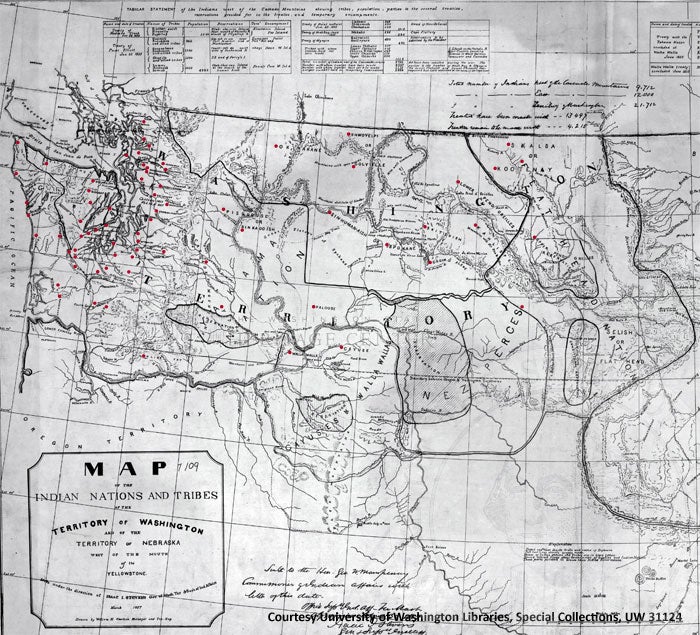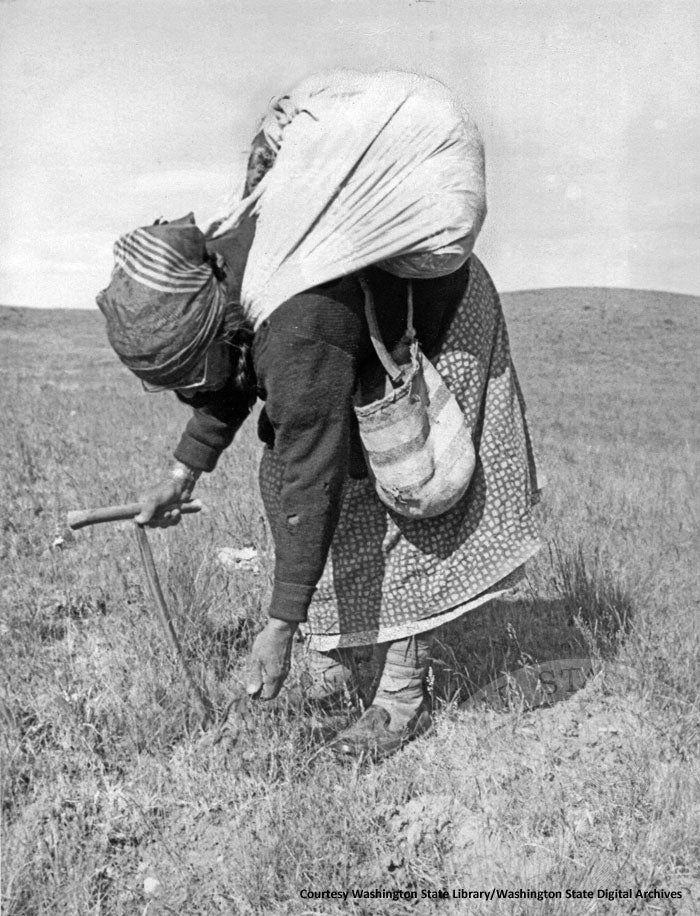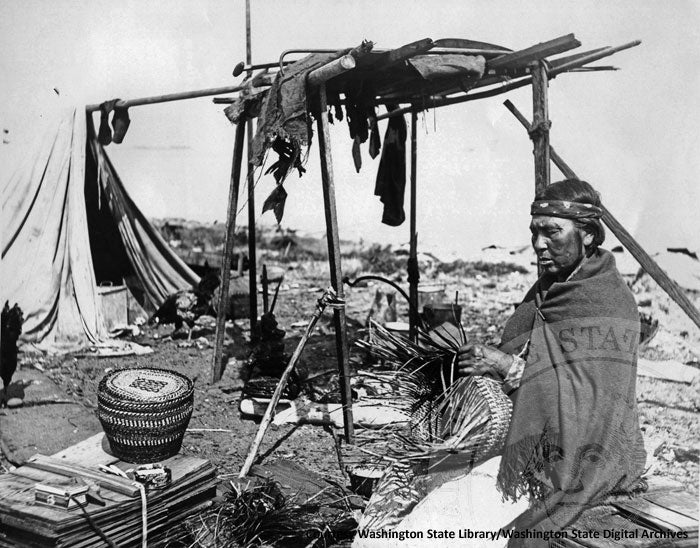“God said he was the father… and earth was the mankind.”Chief Smohalla, Wanapum, 1895
In Western Washington, Tahoma (Tacobet), the volcano now known as Mount Rainier,
reigned as the producer of salmon-rich rivers. With deer, berries and roots, salmon
and steelhead sustained tribes and contributed to their spiritual wellbeing. In
Eastern Washington, the Columbia River or Wimahl (Nch' i- Wàna) delivered schools
of salmon to Native fishermen who waited with spears at landmarks like Celilo Falls.
Eastern Washington tribes also hunted big game, picked berries and gathered plants
such as bitterroot. Depending on the region, Washington tribes lived in cedar-plank
homes or dwellings four to six feet underground. Many bands lived nomadically and
followed their food supply.
“When Christopher Columbus sailed the ocean blue in 1492, he discovered a
world that was new to him but was already an ancient world when he arrived. And
today, we're still here,” says Bernie Thomas, a Lummi Indian.

Map: Reports indicate as many as 40 or 50 million Native Americans occupied the
continent of North America before contact with Europeans. Although Indian populations
were decimated by disease, multiple tribes remained in the Northwest. Above, red
dots indicate tribes and bands in Washington Territory in 1857.

Woman digging bitterroot: A Colville Indian labors for bitterroot, a flowering plant
for medicine and diet that expands six times its size after boiling, and transforms
into a jelly-like substance. Native Americans have relied on bitterroot for centuries.

Woman weaving basket: Known for their remarkable ability and their beauty, Native
baskets are both utilitarian and revered symbols of culture and heritage. Above,
a woman of the Makah Nation weaves in front of her home.